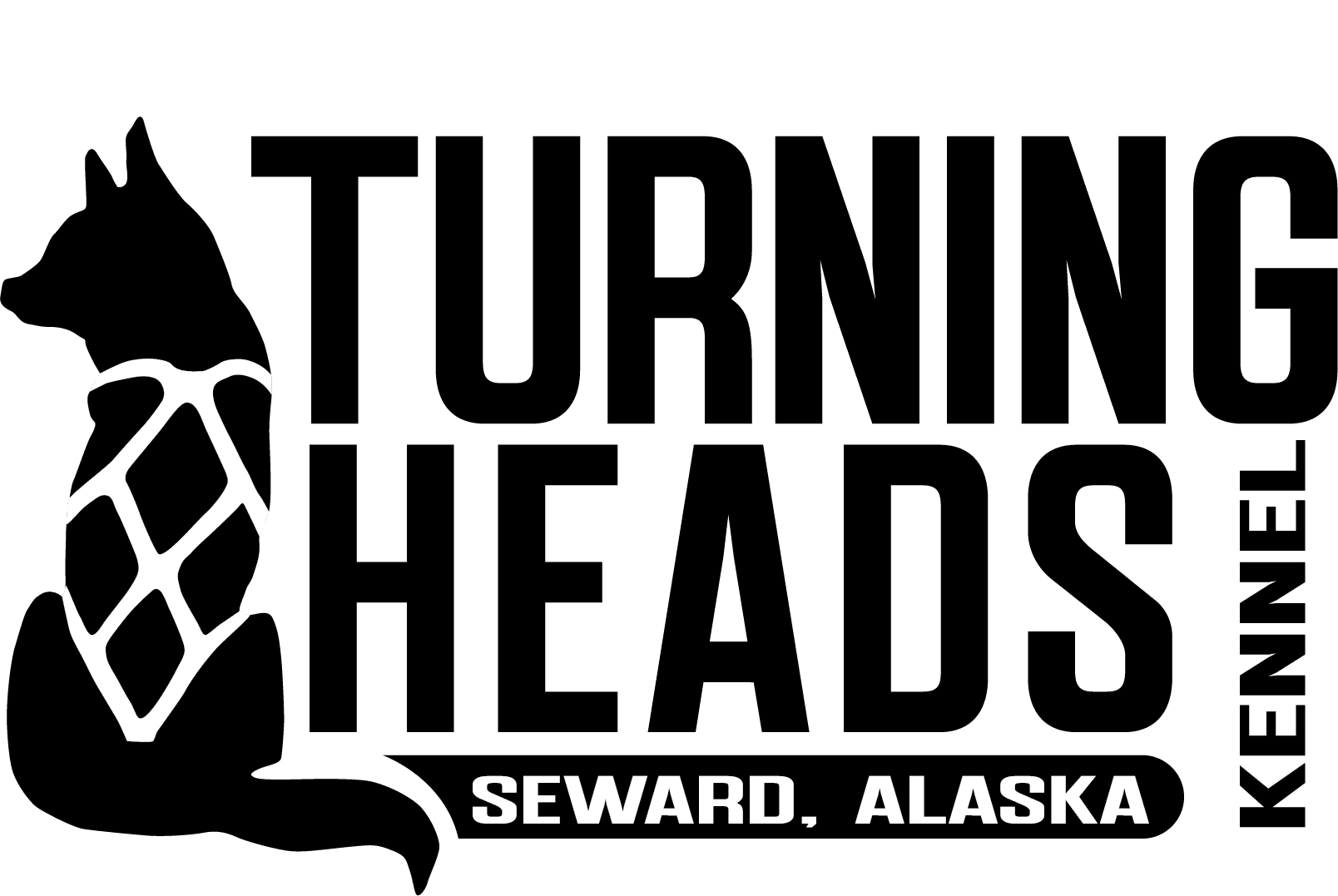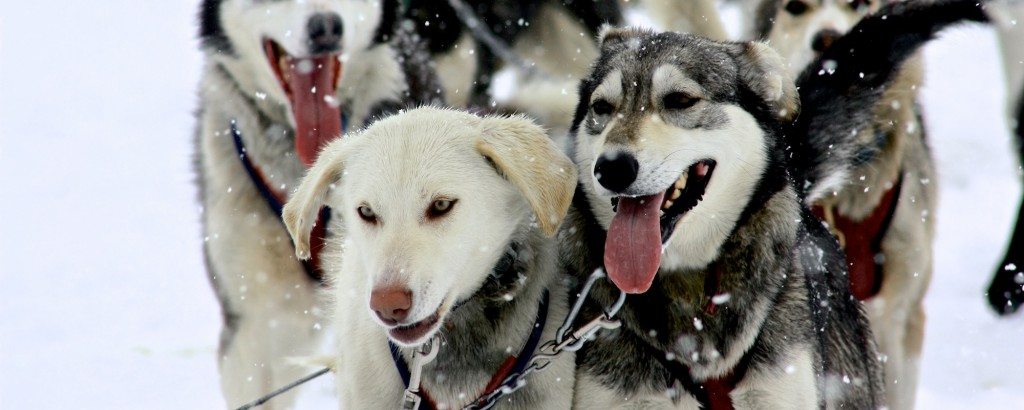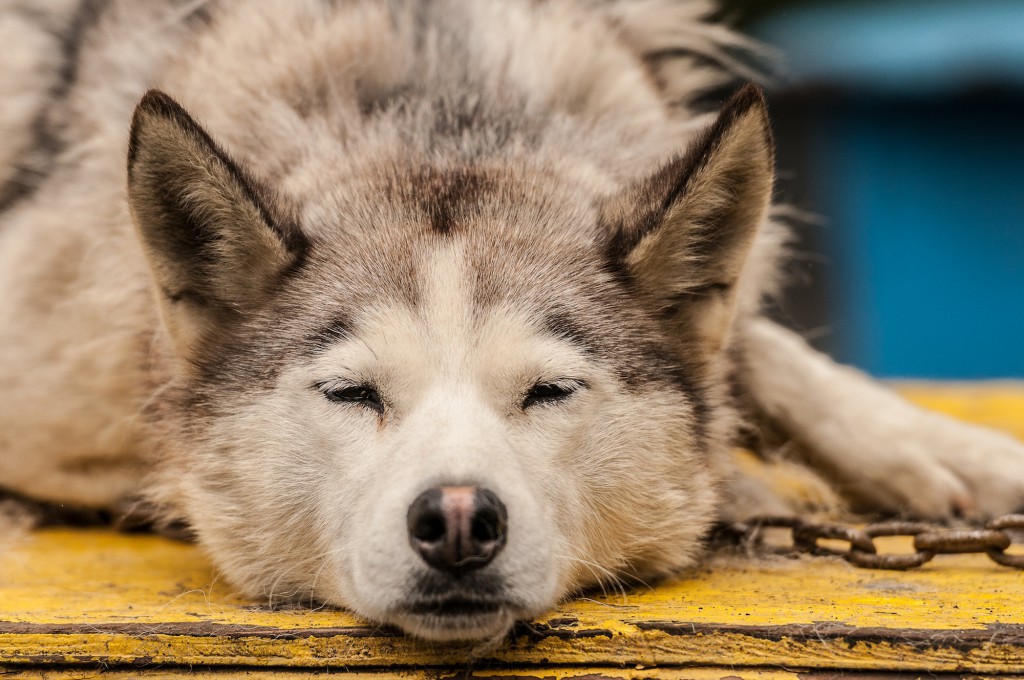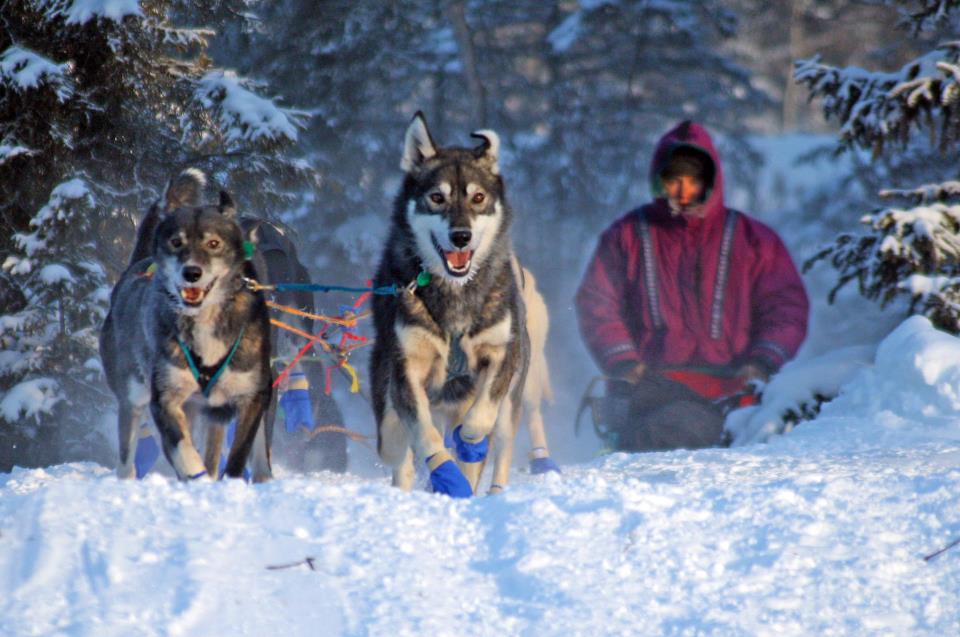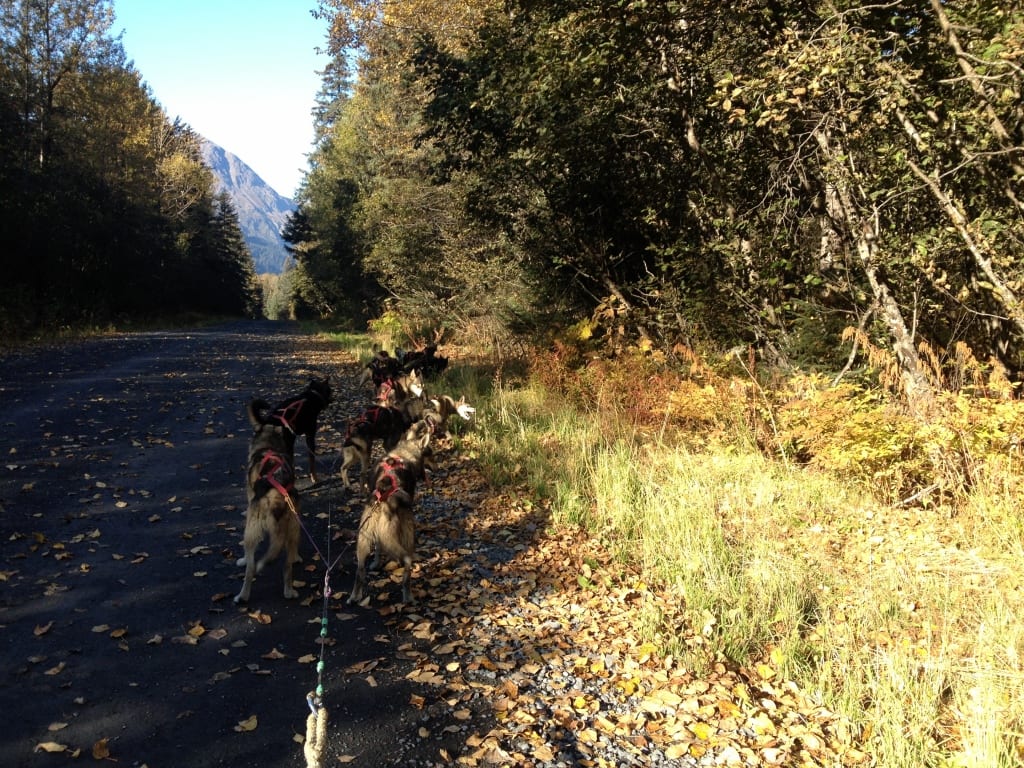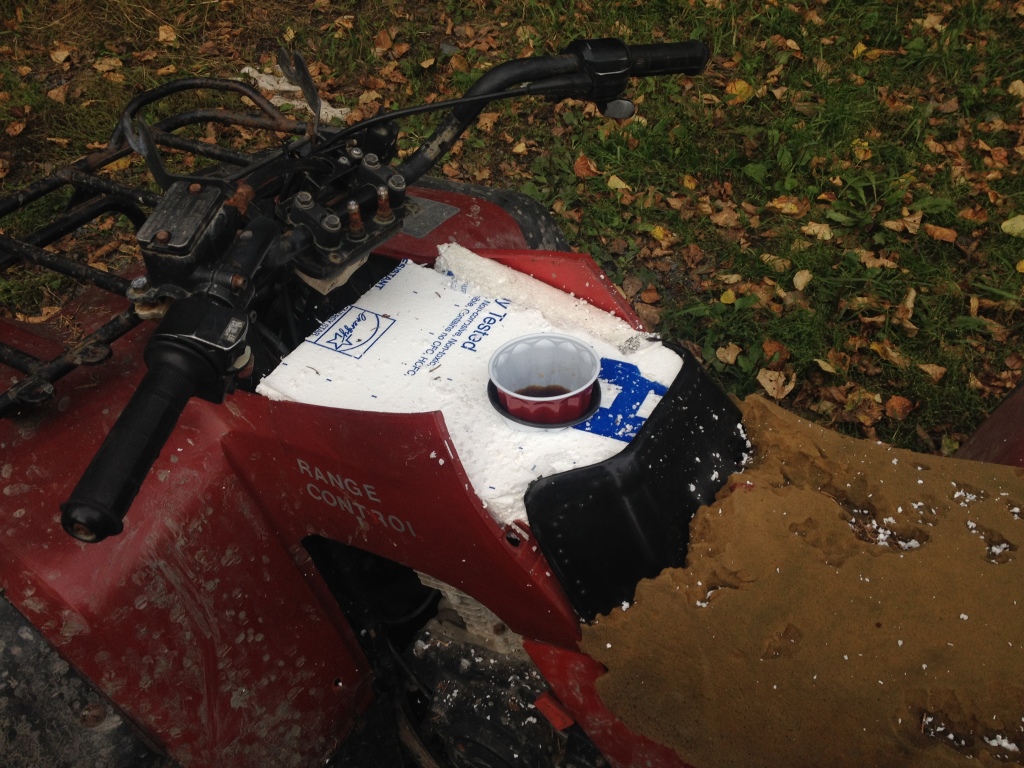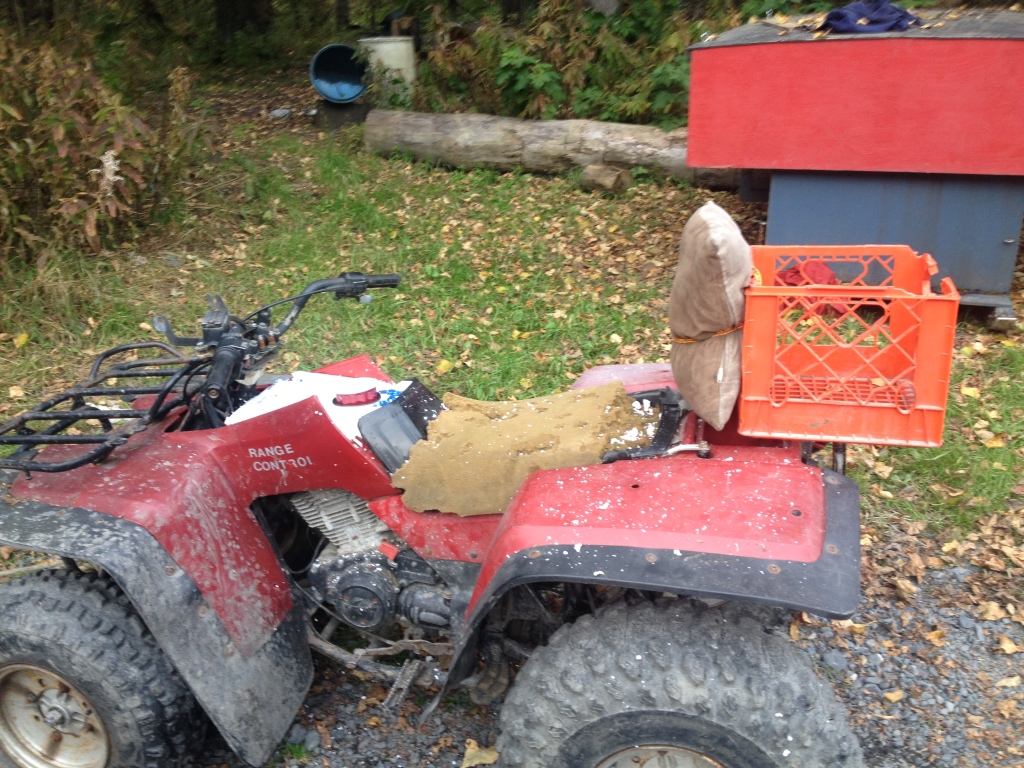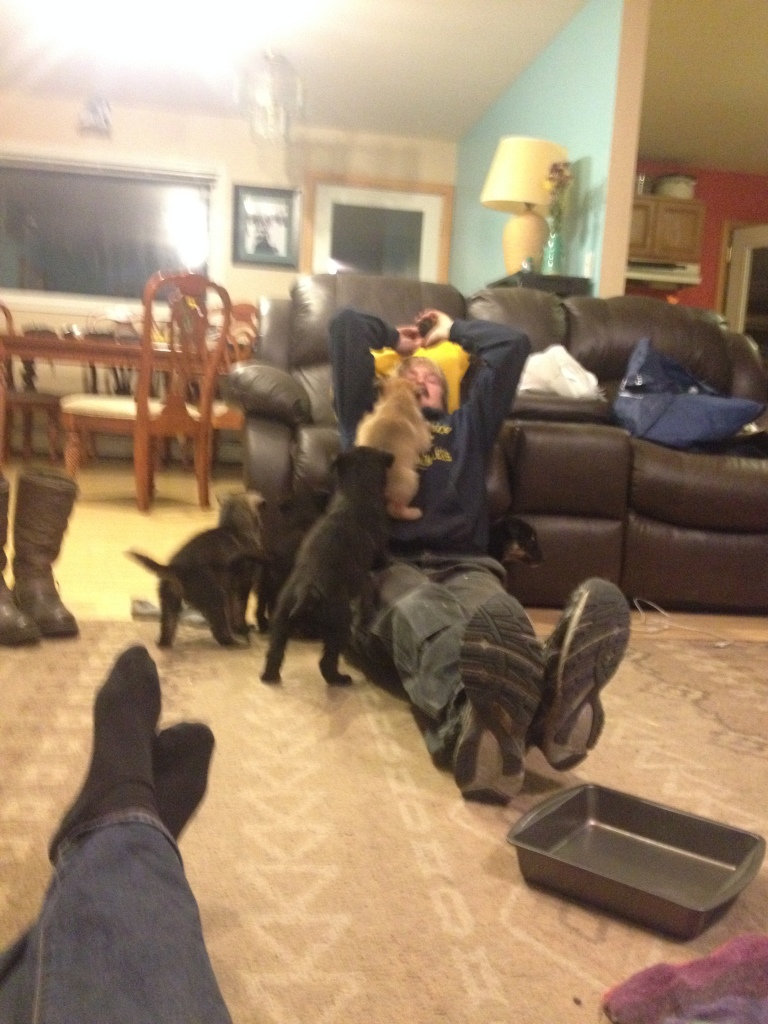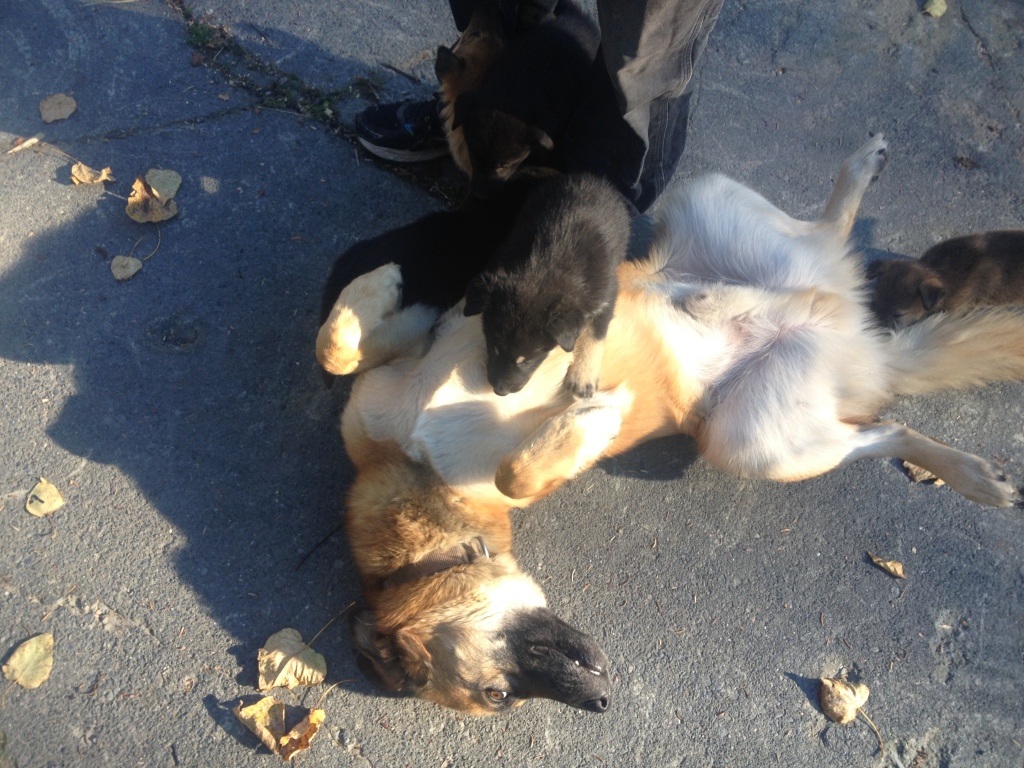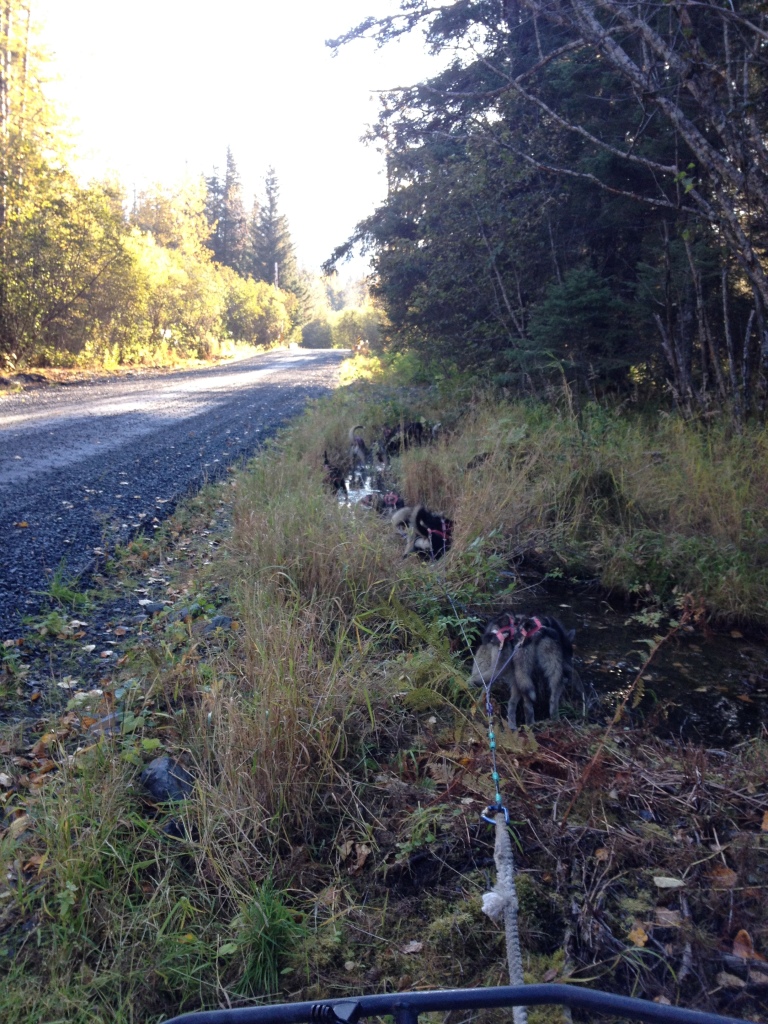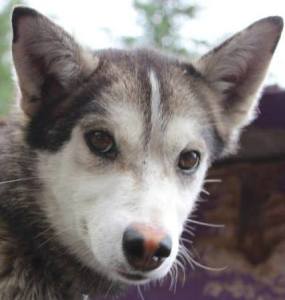This week has been full of projects. We end our days tired with movies and puppies playing at our feet. We’ve been working on our enclosed trailer. It’s a 24 foot trailer we are going to use to transport our dog team and will hopefully allow us enough room where we can bunk in it if needed. We started by putting a fresh coat of paint on the floor and are now building the dog boxes to go in it. We are hoping to have 24 boxes in total in our trailer. Because we live in Seward, we spend a lot of time on the road training our dogs. On the plus side, our dogs love to travel, can all run loose outside the truck, and get to experience tons of trails all around Alaska.
Training runs are starting to take up more and more time. I’m running 12 dogs per team and have been working on finding good partners for each dog. Great chemistry makes a great team.
We’ve both been trying to work with leaders who haven’t had as much experience at the front of the team. We’ve had a few surprises early on with dogs. Bud is a 4 year old male who has never made the race team but this year is showing incredibly potential. It seems like his gait has really changed and he’s finally found his feet.
When not running dogs, we’ve relaxed watching netflix and hanging out with our younger pups. They run around inside, crawl and climb over everything, and, in general, have way too much energy. We enjoy watching them learn and play together. It will only be a few months before they are running too — a good reminder of how quickly time flies. Nothing is permanent, our life is always evolving.
Today Seward saw heavy sheets of rain slipping from the sky. The dogs sat outside their houses looking up at the sky as if to ask, “Where is the snow?” Our friends, further to the north have posted about snow flakes and flurries. Some are even on sleds! For us, the snow remains up high, coating the mountains that peer down at our house and kennel.
All too soon we will see snow of our own.
